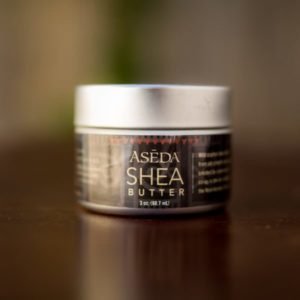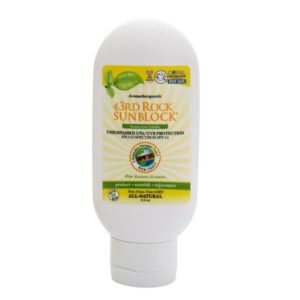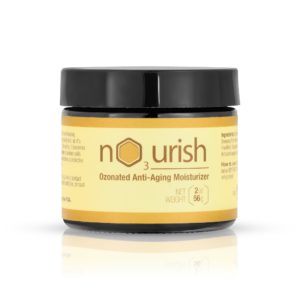Sharing is caring!
It’s a common question: What’s the best sunscreen for babies? Infants and small children have sensitive skin and lower ability to flush out toxins so it makes sense to choose something safe.
Out of the 10,000 chemical compounds used in the personal products industry as a whole, only 13 percent have been tested for safety. Dozens of these chemicals are found in commercial sunscreens, so it is essential to get the facts straight before you put any kind of supposed protection on your skin.
After all, your skin is the largest organ in your body, as well as one of the most important. In addition to the obvious way it protects your internal system from the external environment, it also detects pain, pressure and temperature, helps to regulate internal core temperature, and is the largest organ of elimination you have. This goes for baby too!
A lot is riding on how vibrant your skin stays, so one would think that skin products should be proven safe before they go on the shelves ─ and on to your or your baby’s body.
Sunscreen “Conventional Wisdom”?
The fact that sun overexposure can lead to free radical DNA damage and diseases like cancer is nothing new. Nearly two million Americans are diagnosed with skin cancer each year, according to the Skin Cancer Foundation. Local dermatologist usually tell their patients to apply a “full spectrum” sunblock on a daily basis. This protects people against UVA exposure in particular, which is the real culprit when it comes to cell mutation and DNA damage caused by the sun.
What they don’t mention is that lack of vitamin D plays a huge role in these diseases and you get vitamin D from responsible sun exposure.
The best sunscreen for babies could actually be getting enough sun and at the right times of day to optimize the body’s natural ability to protect itself. However, there will always be times when you and your baby want to be out in the sun more; like at the beach, that’s when sunscreen is needed. But take a second look before you buy. The commercial sunscreen you are about to purchase probably contains chemical compounds that could prove to be far more harmful than any damage the sun could ever do.
The Deadly Effects Of Commercial Sunscreens
“During the past 50 years, we have increased the number of synthetic sunscreen chemicals that we use,” says Dr. Peter Dingle in an article for the online natural health magazine, Nova.
“We have done this with virtually no consideration of how vulnerable we are to these chemicals ─ or how little we know about their subtle and cumulative toxic effects. We assume that because they are so easily purchased from the supermarket shelf, they must be safe to use.”
According to a 2001 research study conducted by the Institute of Toxicology in Zurich, Switzerland, methoxycinnanate, oxybenzone, and benzophenone, synthetic compounds found in many commercial sunscreens, have been linked to the growth of breast cancer in laboratory rats.
A chemical compound called 4 MBC is especially potent as well. In studies conducted by the same entity, when 4 MBC was mixed with olive oil and applied to the skin of rats in the same proportions as common sunscreen, it “doubled the rate of uterine growth well before puberty.”
“Ingesting” any one of the substances listed above through the skin can produce Xeno-estrogens in the body. Xeno-estrogens are endocrine disruptors that aggressively replace naturally-occurring estrogen. When a build-up of these “foreign estrogens” occurs, research has shown that this can lead to cancer tumor growth as well as other hormone-related issues. A daunting study conducted by the U.S. Center for Disease Control found that 97 percent of the individuals tested (ages 6 and up) had oxybenzone in their urine.
Who Are You Really Buying Your Sunscreen From?
The best sunscreen for babies would have to be one not produced by companies who use these nasty ingredients. “Eighty percent of the sunscreen that is sold in this country is made by three companies,” explains Guerry Grune, PhD, creator of 3rd Rock Sunblock, a mineral-based sun protectant and skin strengthener that uses micronized zinc oxide and other food-grade natural ingredients in an alkaline base.
Grune is also an active member of the committee that helped to pass the Sunscreen Innovation Act in November 2014. However, although the committee thought the Act would be a major victory for stricter regulations, it is turning out to be mere lip service on the part of the Obama administration.
“There are about ten active sunscreens that were supposed to be tested by the FDA that are being used in countries outside the United States,” explains Grune. “Those sunscreens have not been approved by the FDA because they have not been tested … [The Act] was supposed to push along the FDA to get these ten sunscreens, as well as other new sunscreens, tested so they could protect the public. The FDA … still has done nothing because, even though [the Act] passed, there was no funding attached to it.”
And what of those three companies? Coppertone was recently sold to Bayer (that are known for their bee-killing neonicitinoids). Banana Boat, which is owned by Playtex (the same company that makes Eveready Batteries). The third company, Neutrogena, despite its “natural” marketing image, has been owned by Johnson & Johnson Company since 1995.
With such connections to major drug companies, it’s no surprise that 11 of the 14 sunscreens that made it on to the Environmental Working Group’s “2017 Hall of Shame,” are made by Coppertone, Banana Boat, or Neutrogena.
Enjoy The World’s Safest Sunscreen
Best Sunscreen For Babies: Alternatives To Toxic Sunscreens
There ARE products out there that actually boost the overall health of the skin while protecting against UVA radiation too. The skin, just like the internal organs, can be effected by overly acidic environments — which creates the perfect environment for cancer cells to cultivate.
3rd Rock Sunscreen, created by chemical engineer Guerry Grune, PhD, is an example of a product that provides not only protection from UVA exposure, but also creates an alkaline environment that discourages cancer growth as it strengthens the skin overall. This product and others like it are rays of hope in the polluted sea of toxic-laden commercial sunscreens that currently line the shelves.
“If you can’t put it in your mouth, why would you put it on your skin?” Grune says matter-of-factly.
Why, indeed.
Especially when you consider the fact that babies put everything, everything, in their mouths. The best sunscreen for babies will either be:
- A physical sunscreen (not chemical) like 3rd rock
- Optimal in vitamin D levels
- Responsible sun exposure
It’s that simple!
 Nikki Lyn Pugh, MFA is a writer, editor and coach. When she isn’t writing articles, editing books or working on her young adult sci-fi fiction novel, she is traveling around the country with her partner the artist Shane Barksdale, and their dog Keidi, in their retro 1986 RV. She can be reached via www.asyourword.com website or here.
Nikki Lyn Pugh, MFA is a writer, editor and coach. When she isn’t writing articles, editing books or working on her young adult sci-fi fiction novel, she is traveling around the country with her partner the artist Shane Barksdale, and their dog Keidi, in their retro 1986 RV. She can be reached via www.asyourword.com website or here.
Submit your story or essay to Buzzworthy Blogs.
-
 Aseda Shea ButterRated 5.00 out of 5 based on 1 customer rating
Aseda Shea ButterRated 5.00 out of 5 based on 1 customer rating -
Sale Product on sale
 America’s Safest Sunscreen: 3rd Rock SPF 35$29.95 – $84.95Rated 4.80 out of 5 based on 5 customer ratings
America’s Safest Sunscreen: 3rd Rock SPF 35$29.95 – $84.95Rated 4.80 out of 5 based on 5 customer ratings -
 NO3URISH Ozonated Anti-Aging Moisturizer$44.49 – $126.47 — or subscribe and save 5%Rated 4.81 out of 5 based on 21 customer ratings
NO3URISH Ozonated Anti-Aging Moisturizer$44.49 – $126.47 — or subscribe and save 5%Rated 4.81 out of 5 based on 21 customer ratings
- Tags: healthy skin, sunblock, sunscreen, UVA, UVB



